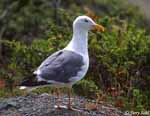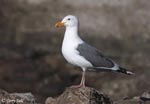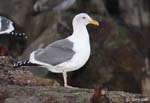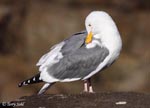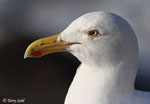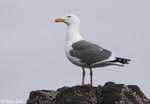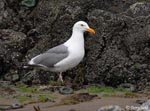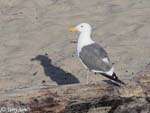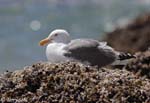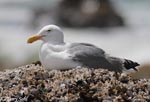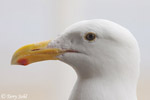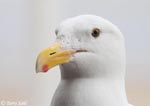| Length: 25 inches | Wingspan: 58 inches | Seasonality: Non-resident in South Dakota |
| ID Keys: Range on West Coast, heavy bill with red spot on lower mandible, white with dark grey wings and back (adult), pink legs | ||
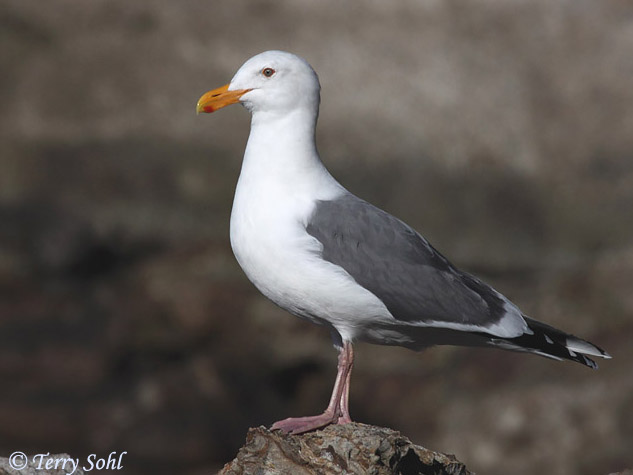 The
Western Gull is well-named, as they are a species that is nearly always
found within just a few miles of the West Coast. Their range is large,
however, with breeding populations from the Pacific Coast of Baja California
up to Washington state. As a species, they have adapted well to a
human presence, and can be just as common in and around large West Coast
cities as around other more natural habitats.
The
Western Gull is well-named, as they are a species that is nearly always
found within just a few miles of the West Coast. Their range is large,
however, with breeding populations from the Pacific Coast of Baja California
up to Washington state. As a species, they have adapted well to a
human presence, and can be just as common in and around large West Coast
cities as around other more natural habitats.
Habitat: Found on a variety of habitats along the West Coast of North America, but never strays more than a few miles inland. They can sometimes be found relatively far out at sea, but most often stay near the coast.
Diet: Feeds on many kinds of marine life, including fish, squid, crustaceans, mollusks, eggs, young birds, sea urchins, and carrion. Has adapted well to a human presence, and will visit garbage dumps and other man-made features for refuse.
Behavior: Foraging techniques depend upon season and location. Very adaptable, using a variety of techniques to take advantage of what food is available.
Nesting: Western Gulls breed in colonies, most often on islands off the West Coast, but also sometimes on cliff faces and other inaccessible locations on the mainland. The nest is a simple depression lined with vegetation. Three eggs are usually laid, and both parents help to incubate them. Upon hatching, both parents will tend to the young and feed them.
Song: A variety of vocalizations, similar to other Larus gull species such as the Herring Gull.
Migration: Western Gulls are found in most of their range at all times during the year. However, individual birds may wander widely along the west coast of North America, and they are typically only found in the far northern and far southern parts of their range in the winter.
Interactive eBird map: Click here to access an interactive eBird map of Western gull sightings
Similar Species: In range, similar to other Larus gulls. Mostly likely to be confused with Herring Gull or Thayer's Gull. At the northern end of their range, identification can be problematic for some individual birds, as they occasionally hybridize with Glaucous-winged Gulls.
Conservation Status: Populations of the Western Gull are widespread, they are common in many parts of their range, and their populations may even be increasing. The IUCN lists the Western Gull as a species of "Least Concern".
Further Information: 1) National Park Service Channel Islands - Western Gull
2) BirdWeb.org - Western Gull
3) Audubon - Western Gull
Photo Information: Photo taken on December 18th, 2008 - Near San Francisco - Terry Sohl
| Click below for a higher-resolution map |
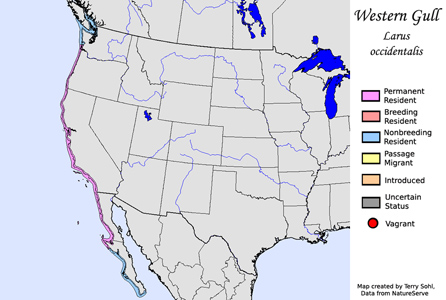 |
| South Dakota Status: Non-resident in South Dakota |
Additional Western Gull Photos
Click for a higher-resolution version of these photos
